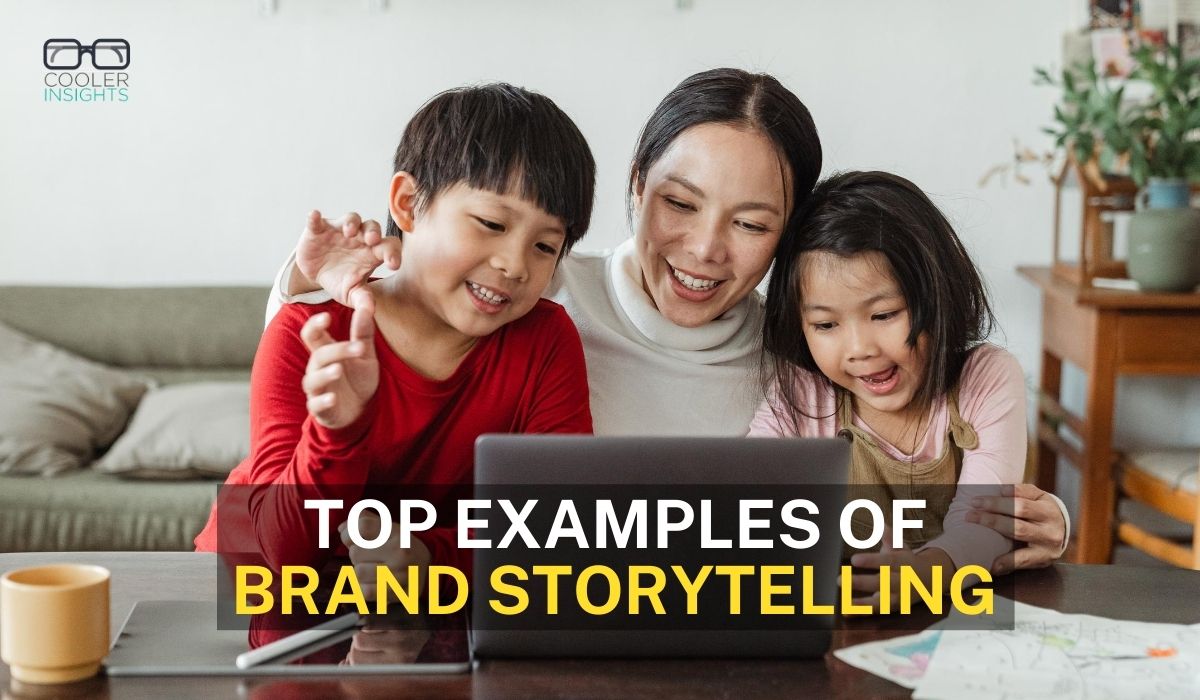
To build a powerful online presence, you need to master the art of brand storytelling. Here’s why:
Compelling stories can be up to 22 times more memorable than pure facts alone. Moreover, storytelling releases the love hormone oxytocin in your audience—a process that makes them a lot more likely to buy from you.
But what are the best examples of storytelling used in brand marketing campaigns? And how do you tell a stirring story on digital channels like Facebook, Instagram, YouTube, LinkedIn, Twitter, TikTok or your website?
In this article, we will dive into the art and science of digital brand storytelling. We will look at some of the best examples of storytelling in the online (and offline) world.
Grab your favourite beverage, settle in your most comfortable chair, and listen as I tell you the story behind marketing stories…
What is Brand Storytelling
First, a preamble on what brand storytelling is all about.
Brand storytelling can be defined as the art and science of using a compelling narrative to evoke empathy and resonance between your brand and your customers. It involves communicating your values, beliefs, and distinctiveness through a story that connects with your audience.
In crafting your story, you’ll need to consider the following storytelling ingredients:
- A message (aka the “moral of the story”) that relates the narrative to your brand
- A plot that brings your audiences on a journey and ties up the action
- Characters whom your audience can resonate with
- Conflicts and challenges that your protagonist/s face
- A climax or turning point in the story
- Resolution of the action through various interventions
- A conclusion—one that (hopefully) satisfies your audience emotionally
The best brand stories have three universal principles:
- Universal Theme: An underlying message that strikes at the core of humanity
- Transformation through a Narrative Arc: A way to show how your characters are changed through an experience
- Highlight the Stakes: Expressing what could be gained (or lost) in the story
Why Brand Storytelling Works
Now that you’ve got an idea of how you can craft your marketing or brand story, your next question would be this: Why does storytelling work online?
There are several reasons to consider here.
#1 Stories make your brand distinct
Storytelling helps your brand to stand out in a sea of “me-too” advertising and marketing content. It helps your audience to focus on your brand or product above others.
#2 Stories make your brand memorable
As we’ve already highlighted, our brains are wired to remember stories far better than just plain facts and figures.
#3 Stories build brand trust and likability
Storytelling helps to evoke empathy in your campaign content, making your brand more trusted, relevant and liked by your audience.
#4 Stories feel less like advertisements
Nobody likes to see an ad—not even marketers like you and me! However, we wouldn’t mind watching, reading or listening to an enchanting and engaging story.
Now that you’ve learned what stories are and why they’re important, let us look at brands that have mastered the art of marketing storytelling.
#5 Stories helps you to build a brand community
If you regularly create episodic content—eg like a YouTube channel or blog that have sequential content—you can use storytelling to build brand fans. Stories help you to resonate more closely with your audience and bonds them to your brand.
Storytelling Examples that Build Brand Resonance
We begin with examples of brands that have successfully used storytelling to connect with their brand identities and values.
#1 Patagonia
Our first example is Patagonia, an American company that markets and sell outdoor clothing. Patagonia is a company that focuses a lot of their content marketing strategies on storytelling.
If you visit their website, you’ll see what I mean.
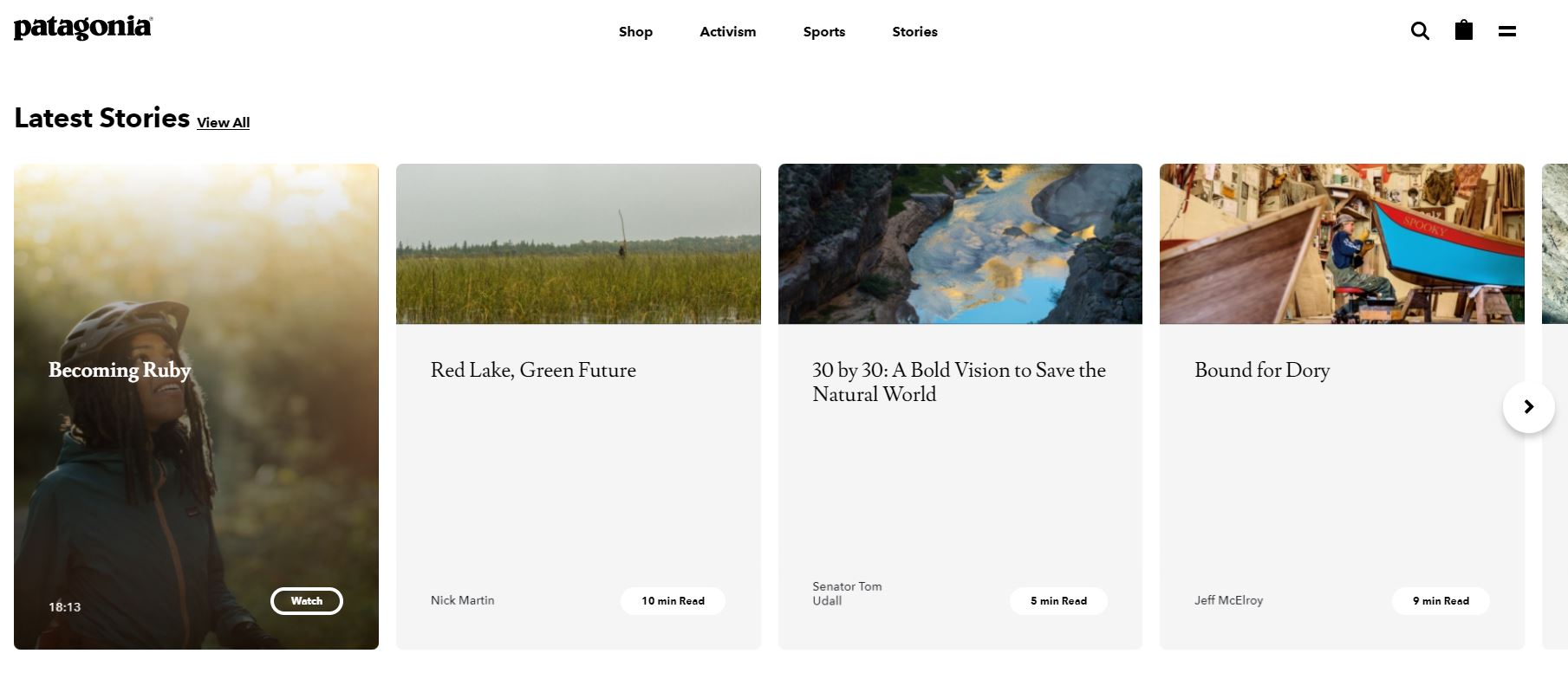
Perhaps their best example of storytelling comes from their own company’s history. This is lovingly told with plenty of archival photographs, and a compellingly gripping narrative here.
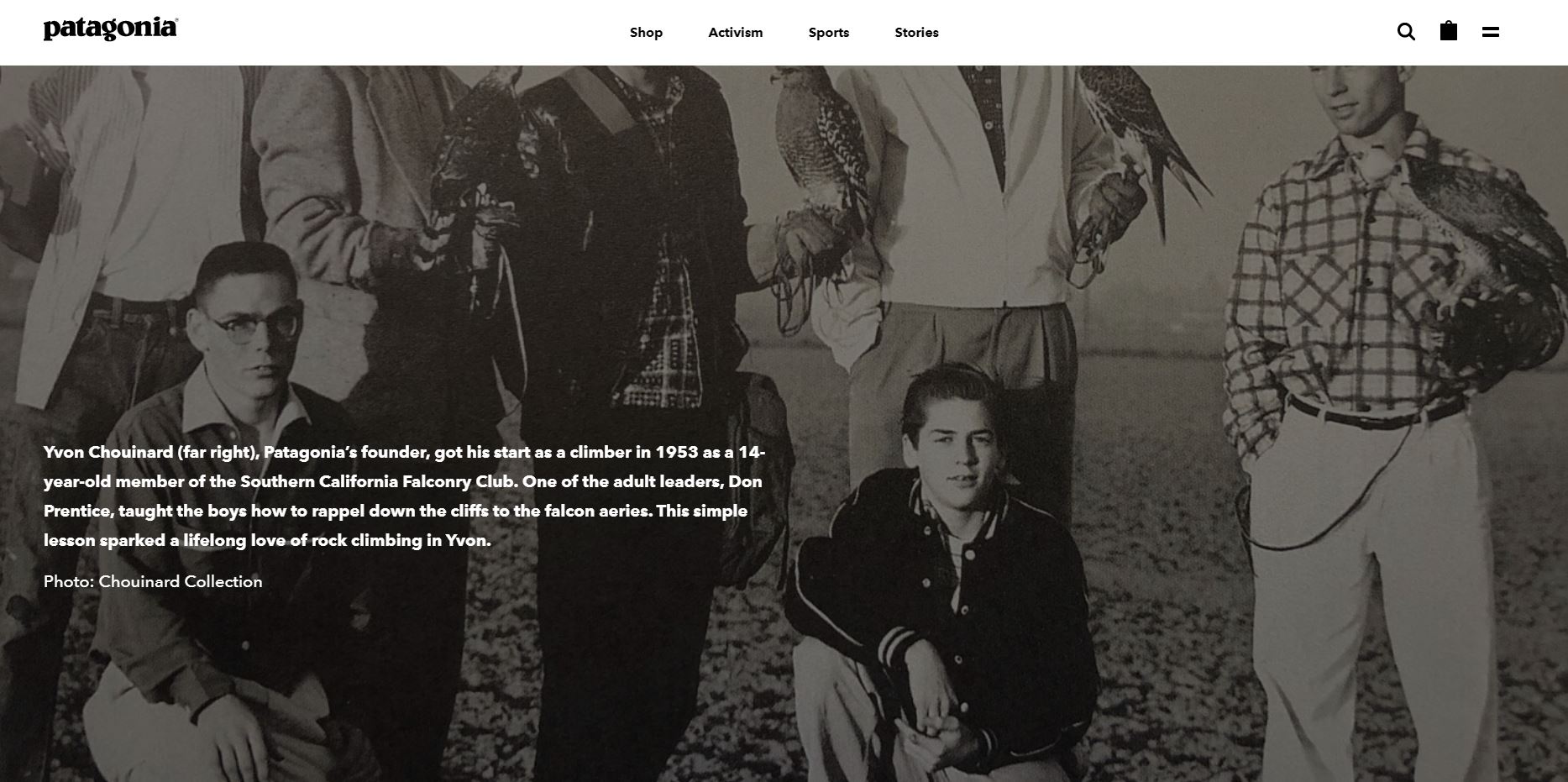
Patagonia also films a lot of video stories featuring different individuals on their outdoor adventures. These stories truly reflect the brand ethos of Patagonia, and the founder’s love for not only protecting but preserving nature.
#2 Patek Philippe
Patek Philippe is a Swiss luxury watch and clock maker known for some of the w0rld’s most expensive bejeweled timepieces. The brand’s patrons include royalty and nobility like Queen Victoria, Albert Einstein, John F Kennedy, Nelson Mandela, Pablo Picasso, and Leo Tolstoy.
Using timeless black and white imagery in their “Generations” series of advertisements, they focus on the bond between a father and his son. Such brand storytelling efforts helps to vividly bring to life the company’s slogan:
“You never actually own a Patek Philippe. You merely take care of it for the next generation.”
Have a look at one of its videos capturing a tender moment between a day and a son exploring a book store together—an invitation to “Begin your own tradition” with Patek Philippe.
#3 Burberry
British luxury apparel maker Burberry is a heritage brand that places storytelling in the heart of its content marketing strategy.
Have a look at its YouTube channel to see how it uses video content to convey its brand values, using storytelling to evoke a sense of bonding among its community. This ranges from its different products, fashion tutorials, the history of its signature products (the checkered trench coat) to highlights from its fashion shows.

Perhaps the most enchanting example of storytelling by the brand was its 2016 film The Tale of Thomas Burberry. A dramatic depiction of the brand’s creator’s life, it felt more like a movie trailer than an advertising campaign and took the advertising world by storm winning numerous awards.
Have a look at it here, and watch how it follows the archetypal storytelling plot structure—complete with romance, conflicts, challenges and a happy ending.
https://www.youtube.com/watch?v=6D5IZtDCS5c
#4 Coca-Cola
How can any piece on storytelling omit one of the world’s largest consumer brands? Coca-Cola has been a legend in content marketing, and they’ve infused storytelling into every single channel of the company’s communications—be they online or offline.
As of this writing, Coke used the Covid-19 crisis as a backdrop for an uplifting video which epitomizes their brand message focusing on the heroes of humanity running the “Human Race”.
Coca-Cola also employs innovative technologies like Augmented Reality (AR) to tell stories.
In this example, customers can point their phone’s camera at a can of Coke and view one of 12 stories coming to life. They each feature a minor conflict (no conflicts no story!), and demonstrate how these virtual characters interact in a humorous manner before sharing a Coke (and resolving their disagreements).
Read more about Coca-Cola’s holistic storytelling efforts here.
Storytelling Examples that Builds Thought Leadership
What about brands that are at the forefront of technological innovations and research? Well, storytelling can be a perfect way to bring your latest findings and inventions to life, and here I’d like to shine the spotlight on three brands that have done so masterfully.
#5 General Electric (GE)
GE is one of the world’s largest industrial and technology powerhouse. To shine the spotlight on their numerous industrial businesses and technologies, they’ve created a storytelling platform called GE Reports which showcases how their customers have used their technologies favourably.
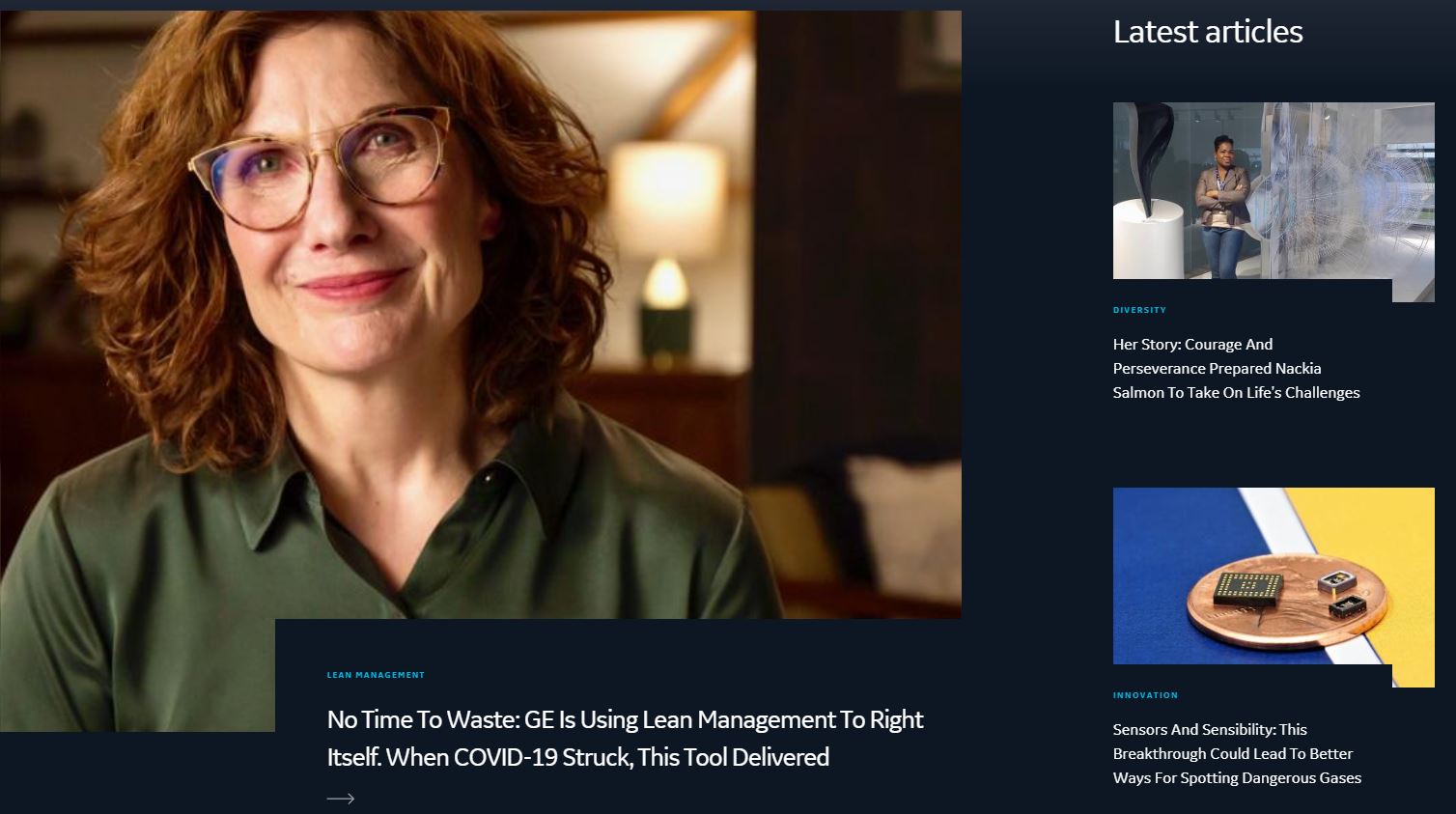
#6 Johnson and Johnson (J&J)
Not to be outdone, Johnson and Johnson (J&J)—one of the world’s largest pharmaceutical and healthcare giant—uses a blog section on their website called Personal Stories to communicate their various inventions and discoveries.
What I love about J&J’s approach was the way they’ve made difficult topics like medical research relevant and personable. By focusing on the humans behind the discoveries and their trials and tribulations, they are able to touch not just the minds but the hearts of their audiences.

#7 Apple
Apple isn’t a stranger to storytelling. Their YouTube channel is literally a smorgasbord of video storytelling at its best, with a mix of product stories, human drama videos, and other compelling content.
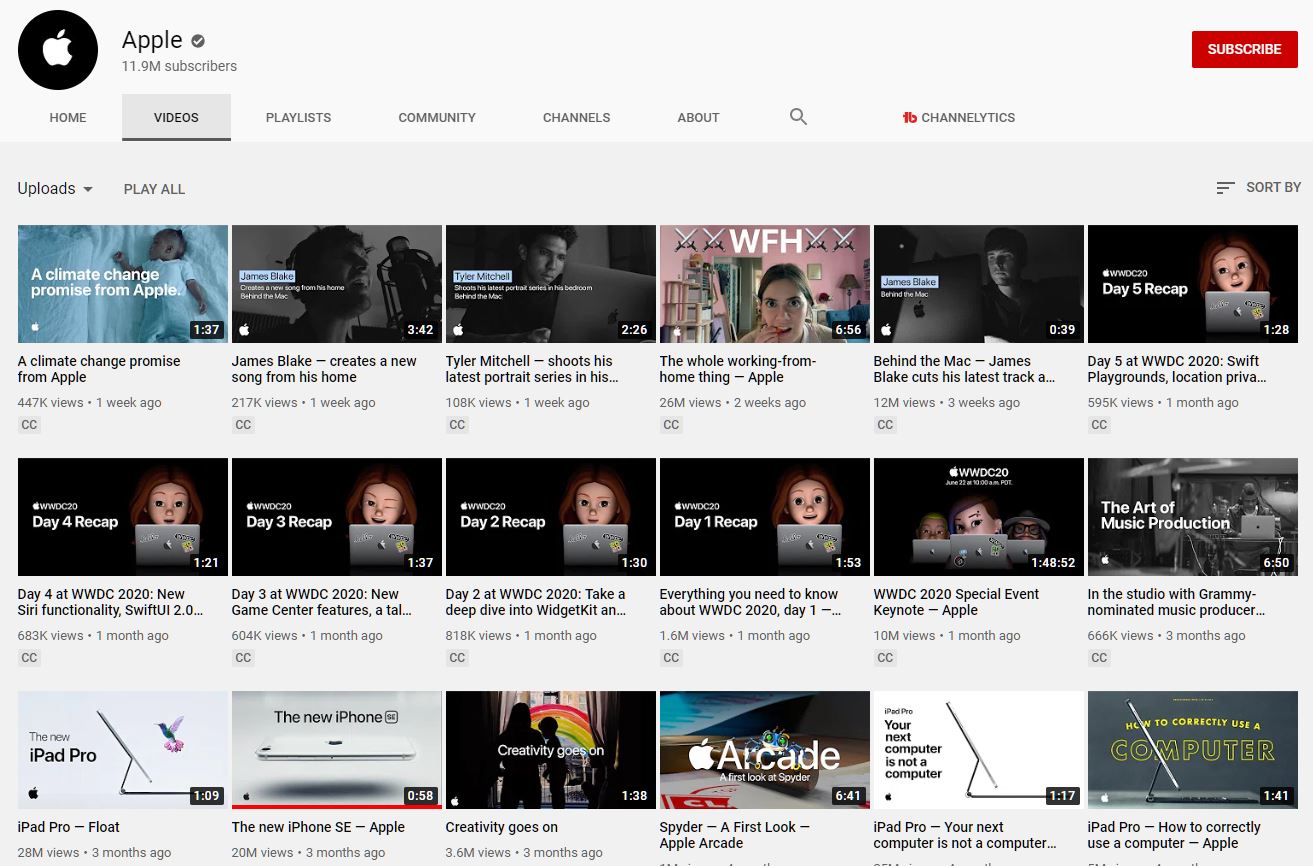
What I love about their storytelling approach, however, is the way they introduce their technological features to a layman audience. Instead of communicating specifications and performance figures (boring!), they use vivid imagery to change how people think about technology.
Here’s an example—the iconic 1984 ad (inspired by George Orwell’s dystopian novel of the same title) aired during the Super Bowl on January 22 1984. This legendary commercial uses storytelling to convey how the Apple Macintosh stands out in a sea of “me-too” PCs in a vivid fashion. Watch it to see for yourself.
Continuing on Apple’s “Think Different” campaign idea, they’ve also used storytelling to convey thought leadership in the 1990s by equating their brand with the “rebels and mischief makers” of the world.
Storytelling Examples that Drives Sales
On a more pragmatic level, storytelling can help to sell more products! Have a look at these best practices and case studies.
#8 SPANX (and Sara Blakely)
Everybody knows that founder of SPANX Sara Blakely became the world’s youngest self-made female billionaire. However, did you know that her journey to wealth came from solving a problem with her underwear?
Getting ready for a party one day, Sara realised that she didn’t have the right undergarment to provide a smooth look beneath her white pants. Using a pair of scissors and sheer ingenuity, she cut the feet off her control top pantyhose (used to keep those “bits” in), and voila! The SPANX revolution was born!
Using her own experience as a narrative device, Sara has used storytelling to effectively sell millions of bras, underwear, leggings, active wear and more under the SPANX brand.
You can watch her story below.
#9 BauBax
Speaking of solving problems, BauBax was launched with the aim of “solving problems faced by travelers around the world.”
The company sought to “revolutionize travel” with their range of utility-inspired innovations, features and designs for travel wear that includes jackets, shoes and other apparel.
What I loved about the brand is how they used a “problem and solution” storytelling approach to convey how their products work. By featuring a central “hero”, the brand draws audiences (and lots of sales) with their videos on YouTube.
Here’s one featuring their travel jacket.
And a second one featuring travel shoes.
#10 Poo~Pourri
Calling themselves a “poop-positive brand dumping the shame around the things we *all* do,” Poo-pourri is an essential oil manufacturer and retailer with a difference. Their goal is to deliver natural essential oils that you can spritz into your toilet bowl to deliver amazing aromas and “liberate your from harmful ingredients and inhibiting worries.”
While the company is certainly on a roll (pun unintended), their sh*t-stirring product is beautifully delivered through a range of storytelling-rich videos on YouTube. Have a look at this.
#11 Dollar Shave Club
One of the most watched brands in the US, Dollar Shave Club offers a subscription box service for men’s grooming products for a couple of dollars per month. The company was sold to FMCG giant Unilever for a cool US$1 billion about five years ago.
What you may not know is the amazing backstory behind the brand. Here’s what happened (adapted from Convince and Convert)…
At a Christmas party in December 2010, Dollar Shave Club founder Michael Dubin was asked by his father’s family friend to help sell 250,000 razors that he bought for cheap from Asia. It gave Dubin an idea—what if he could start a service to get rid of the hassle of selling razor blades and ship them to your door for only a $1 a month each.
This started a revolution where he created a legendary video to connect with his target audience. Casting himself as the protagonist in the video, the hilarious video managed to go hugely viral and sold A LOT of razor blades! Have a watch and see how storytelling is used in this instance to connect with a male audience.
Storytelling Examples that Ride on Social Issues
Finally, let’s look at case studies of brands that have successfully used storytelling to change how we think about social and community issues. These brands do not just use storytelling to push their products or services—they ignite change in their audiences.
#12 NTUC Income
NTUC Income has done a pretty good job by using vivid stories featuring protagonists whom their target audiences can connect with.
Two of their recent campaigns focused on the problem faced by the sandwich generation in providing for both their elderly parents and young children. Have a look at them, and see how storytelling can be used to relate a societal (and family) issue with empathy while subtly conveying their financial planning services!
https://www.youtube.com/watch?v=R-t8qPldklc
#14 Twirly Girl
I first heard about this brand from the My Wife Quit Her Job podcast and I was absolutely riveted by the brand’s story.
Twirly Girl designs and manufactures and sells twirly dresses. These are colourful dresses that allow young girls to twirl as they spin around.
What’s enchanting about this brand though was how they used storytelling. I love how they promote the idea that a dress is not just a piece of apparel but a “happy childhood memory.”
Read founder Cynthia Jamin’s backstory to learn how it inspired her creations (warning: it isn’t a pretty tale):
I didn’t have a childhood. Seven years of abuse took that away. I felt ashamed, invisible, ugly, and unworthy of feeling joy. So when my two daughters were little, I decided to give them something that I never had: a happy childhood memory.
My idea was to sew them a beautiful, super-comfortable twirly dress. Something that would make them twirl with joy. I enrolled in some sewing classes and came up with a design for a reversible dress. Fortunately, I live close to the Los Angeles Fashion district, so I was able to find some amazing fabrics. Everything about my creation was costly: the high quality fabric, the 4 thread stitching, the way the itchy seams were sandwiched away from their bodies… but so what? This was a special gift, so no expense was spared.
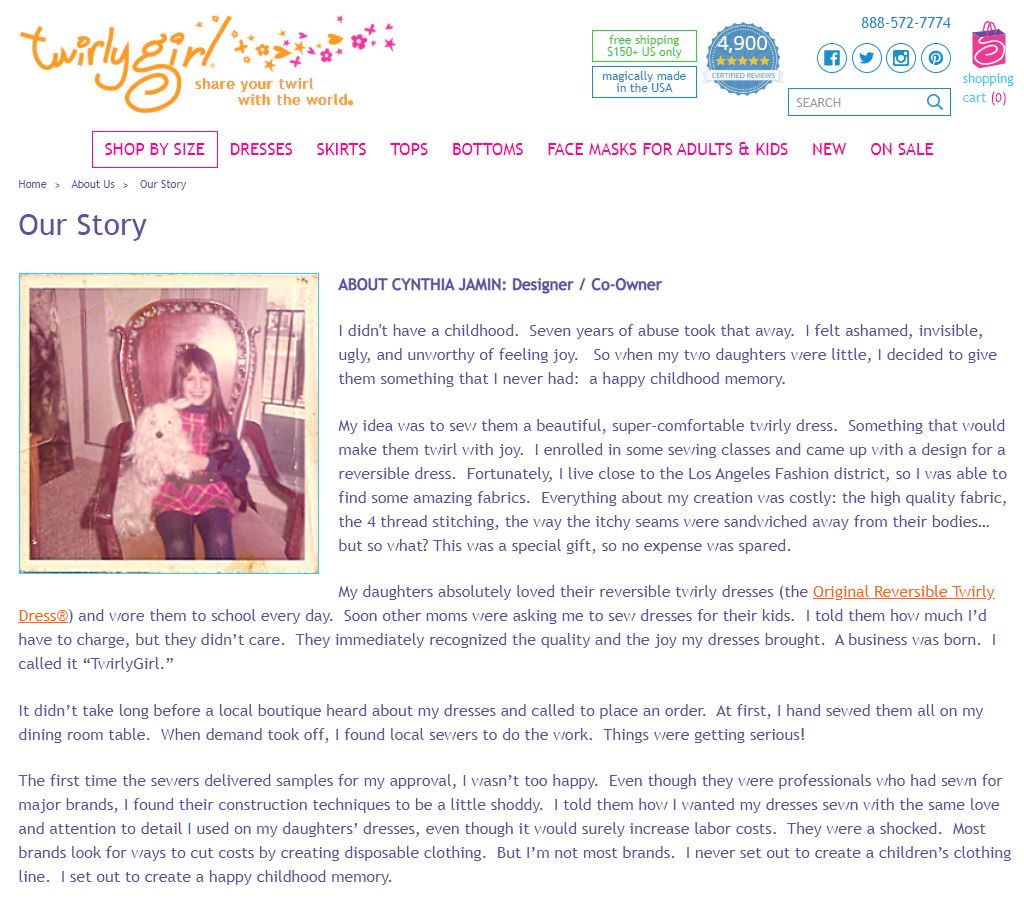
Beyond Cynthia’s own sad backstory, TwirlyGirl also uses quirky little stories to convey the idea of imagination and fantasy with their dresses. Have a look at this Facebook video focusing on how Cynthia returned from a trip to “Jupiter” on a cardboard rocketship!
https://www.facebook.com/TwirlyGirlShop/videos/10156280462721014/
#15 IKEA
Last, but certainly not least, is IKEA. I love how the Swedish giant furniture company use its Facebook Page to tell stories that wrap around their customer’s lives.
What’s interesting is how they’ve conveyed the concept of “Making Home Count” in their content, tapping on storytelling to change how people view their experience of being stuck at home due to the Coronavirus pandemic.
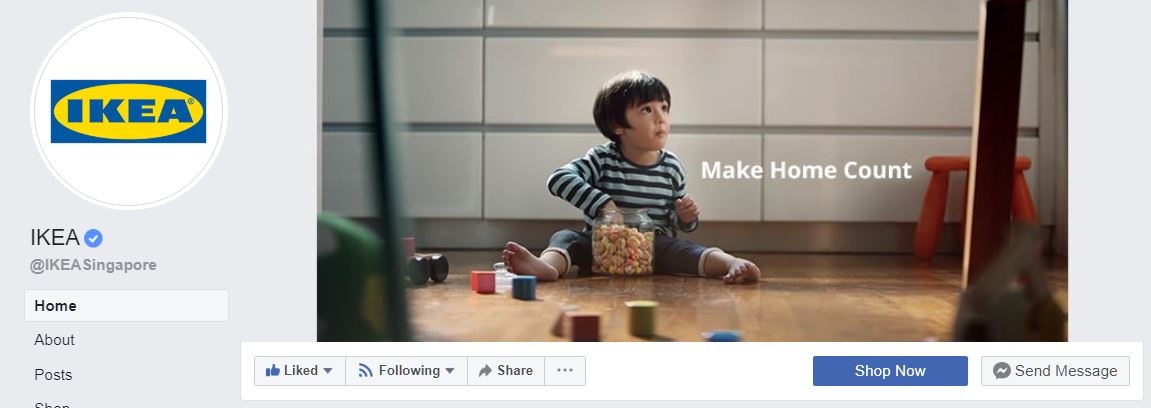
Beyond this overarching story theme, IKEA has also used smaller story arcs to communicate this value. Here’s an example where the concept of making home count is seen by creating a “Dream room” for your child.
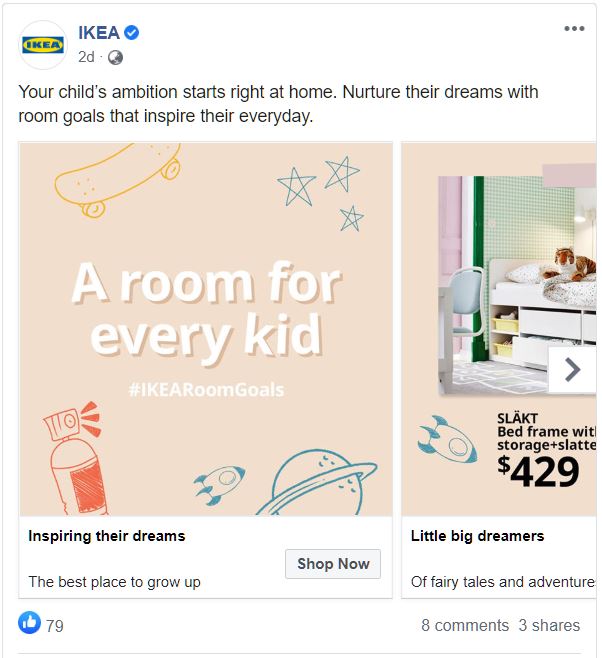
A second example taken from their Facebook page. Here, the idea is to change people’s mindset that you need a big home to house a growing family.
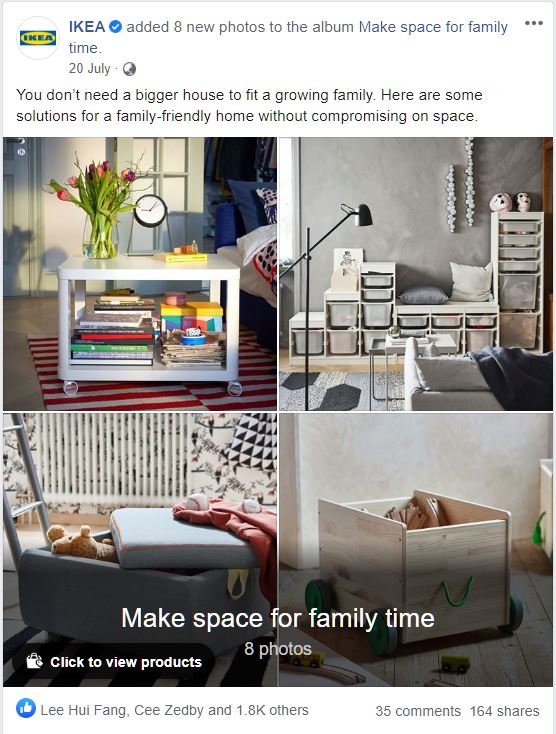
Finally, IKEA has created this wonderfully whimsical story set in Victorian times. Watch it and tell me what message they’re trying to convey to viewers.
Conclusion
I hope that these 15 examples of brand storytelling have given you fresh ideas on the tales that you can tell on your own social media and digital platforms.
Incorporating a story structure into your marketing and branding campaigns can help you to gain more resonance with your audiences.
What are some of the best brand stories which you’ve read, listened to, or watched? Share them with me.
Wish to Tell Better Digital Brand Stories?
Fill in the contact form below for a free 60-minute Skype or Zoom consultation session!

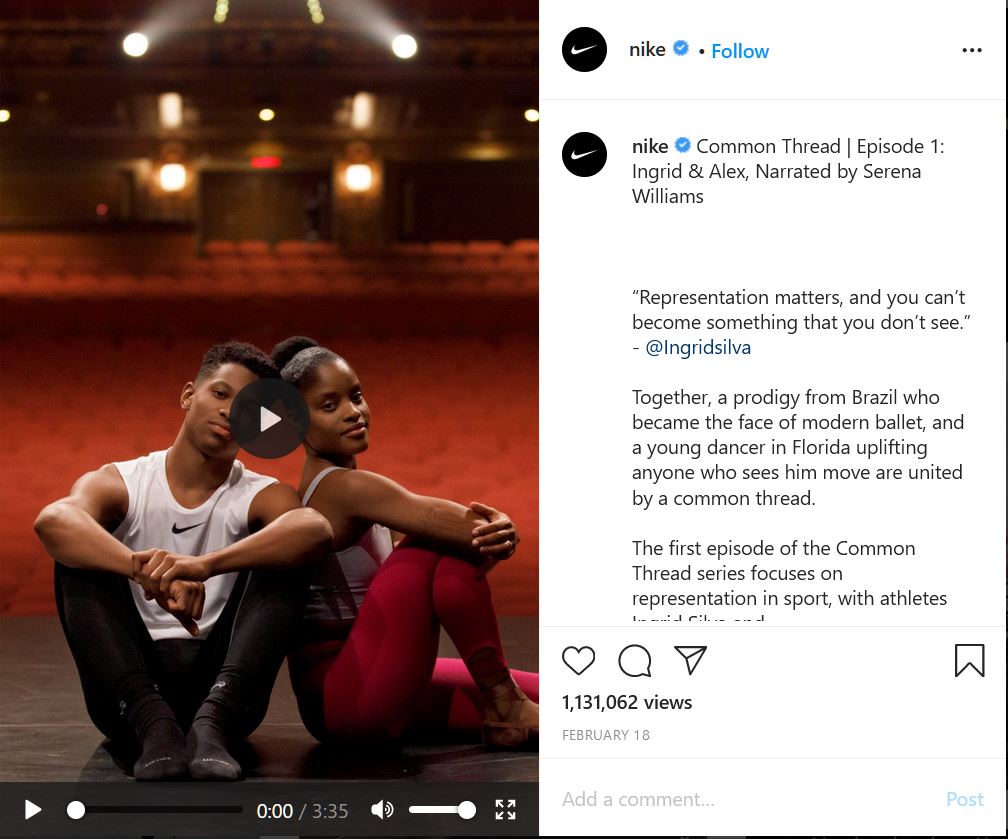
Great article with the perfect examples, thank you!
These examples are truly inspiring! I love how each brand has its unique way of connecting with their audience through storytelling. The diverse strategies highlighted show that creativity knows no bounds in marketing. Can’t wait to see how these brands evolve their narratives in the future!